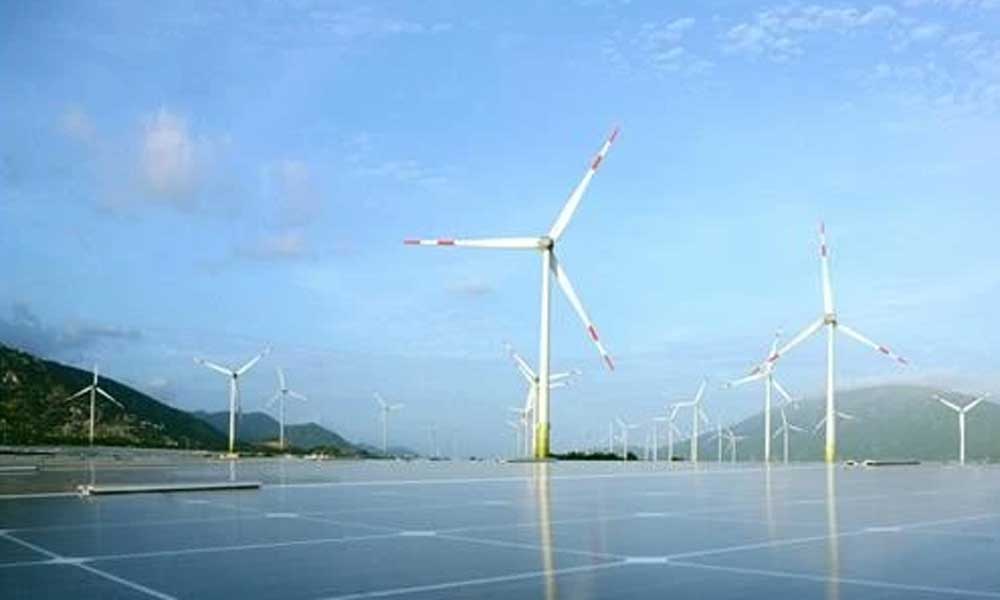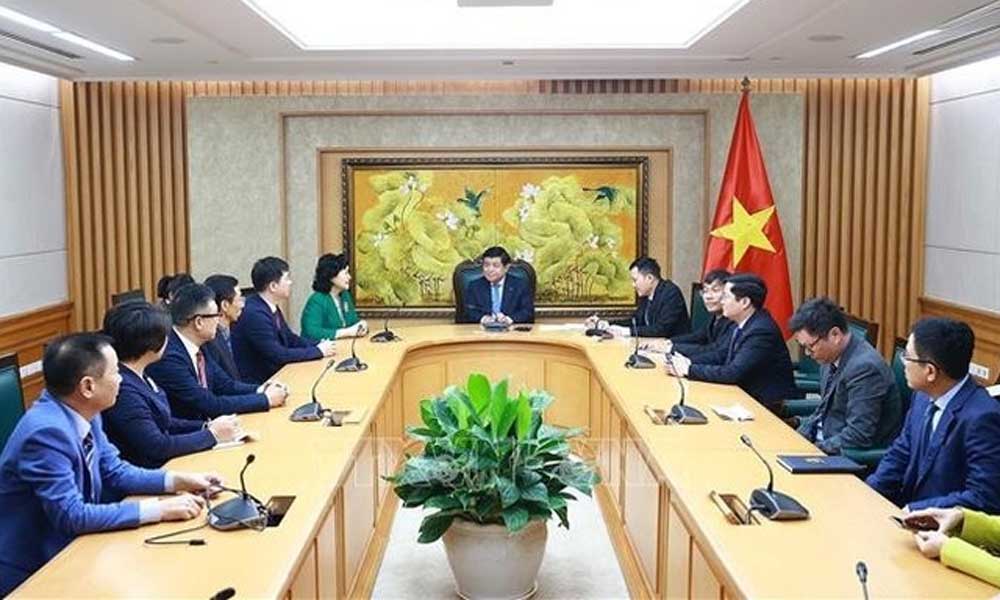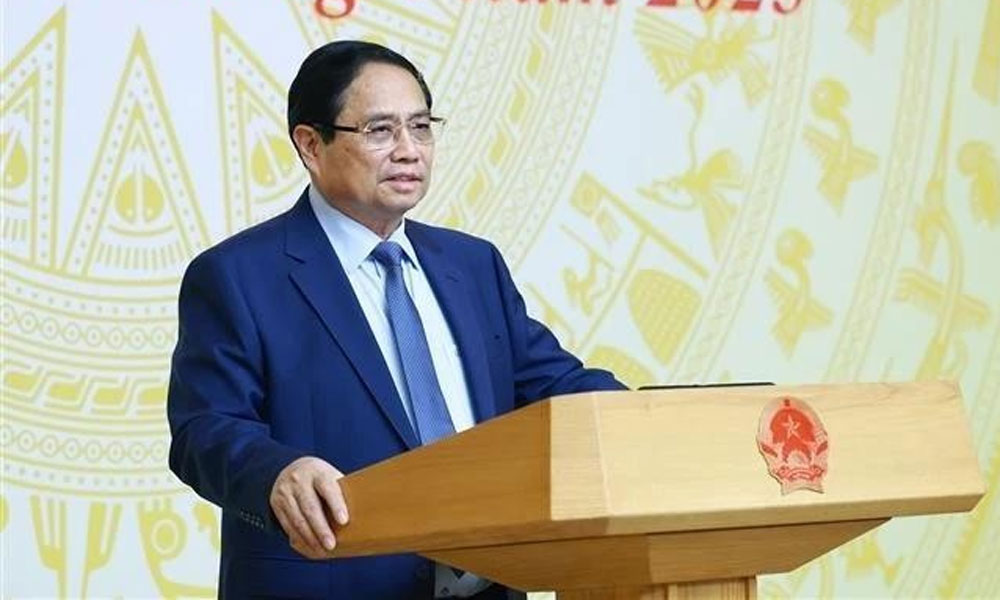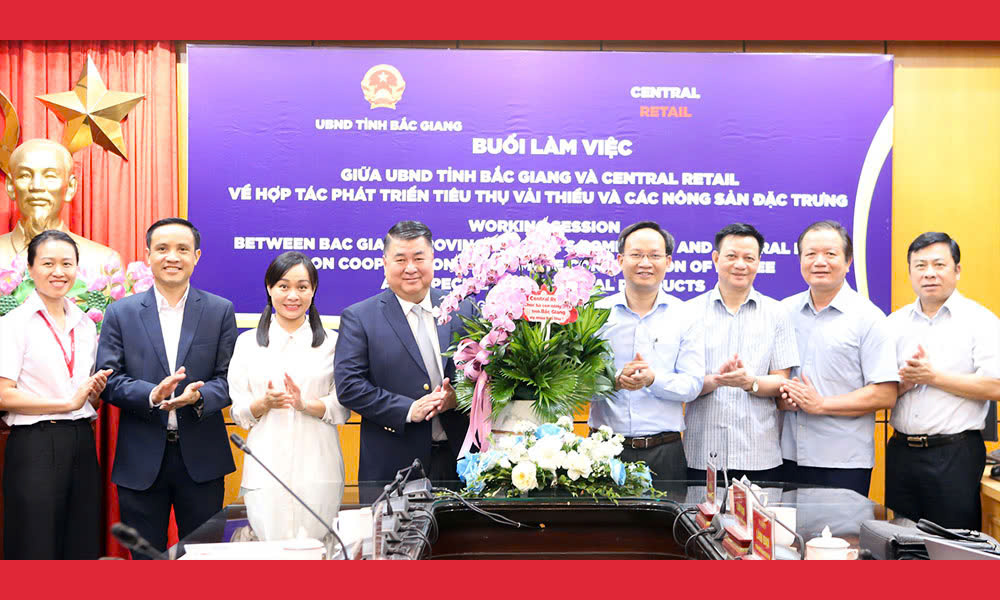PM gives directions on key measures to boost economic growth this year
To achieve the ambitious targets for this year and beyond, the PM has highlighted the priorities of boosting economic growth, maintaining macroeconomic stability, controlling inflation, and guaranteeing major economic balances.
Prime Minister Pham Minh Chinh signed an official dispatch on April 22, outlining key tasks and solutions aimed at driving Vietnam’s economic growth throughout the year.
 |
|
Workers produce electronic components. |
The document comes amid a backdrop of increasingly complex and unpredictable global developments. It said heightened strategic competition among major powers, widespread trade wars, and a deteriorating global economic outlook are posing significant challenges.
Domestically, in light of evolving realities and development demand, as proposed by the Government, the Party Central Committee and the Politburo have raised the national growth target to a minimum of 8% for 2025 and to double-digit growth for subsequent years.
Basing on this, the National Assembly and the Government have issued resolutions to support this revised goal.
To achieve these ambitious targets, the PM has highlighted the priorities of boosting economic growth, maintaining macroeconomic stability, controlling inflation, and guaranteeing major economic balances.
He told ministries, agencies, and localities to keep a close watch on international and regional developments to make timely, appropriate, and effective policy response while proactively building scenarios to ready counter-measures.
In particular, they need to quickly take flexible and efficient actions for immediate and long-term adaptation to the new US tariff policy.
The Ministry of Finance is tasked with coordinating closely with other ministries and localities to urgently finalise and submit a new draft resolution to replace the Government’s Resolution 01/NQ-CP by April 25.
The new document is set to adjust GDP growth scenarios for Q2 and the rest of the year to ensure this year's GDP growth target of at least 8% is achieved.
The ministry must also assess the impact of the US’s reciprocal tariff policy on Vietnam and develop fiscal support packages for enterprises and workers in the affected sectors.
The State Bank of Vietnam is directed to monitor global and regional developments, particularly policy shifts in major economies.
It must employ monetary policy tools effectively to appropriately regulate exchange rates and interest rates, ensure adequate capital supply for the economy, and maintain the stability of the monetary, foreign exchange, and gold markets as well as the safety of the credit institution system.
Special attention is to be given to cutting lending interest rates and providing short-term loans for businesses affected by the US tariff policy.
The preferential credit package should be expanded to cover the timber, fishery, and forestry sectors, which are considerably impacted by the new US tariff.
According to the dispatch, traditional growth drivers must continue to be renewed and promoted.
In particular, public investment disbursement ought to be accelerated toward achieving 100% of the target set for this year. Preparations for the 2026–2030 medium-term public investment plan must also begin, limiting the number of centrally funded projects to no more than 3,000.
Meanwhile, more large-scaled FDI projects that apply high technology and are environmentally friendly should be attracted, and obstacles to FDI firms, especially administrative procedures, be addressed in a timely manner to accelerate their projects in Vietnam.
In terms of consumption, the PM asked for stepping up measures to connect supply and demand, encourage e-marketplaces to stimulate the consumption of domestically produced goods, launch promotional programmes nationwide, and distribute more goods to rural, border, and insular areas.
Export promotion is another critical area. The Ministry of Industry and Trade and relevant authorities are instructed to fully exploit Vietnam’s 17 existing free trade agreements, expedite ongoing negotiations, and initiate talks on new FTAs with potential markets such as the Middle East, Africa, Latin America, Central Asia, Eastern Europe, India, Brazil, Pakistan, and Egypt.
Urgent talks are also to be held with US agencies to negotiate a reciprocal trade agreement that is mutually beneficial.
The directive also includes guidance on tapping into new growth drivers; making breakthroughs on science and technology development, innovation, and digital transformation; building free trade zones and international financial centres; developing the private sector; and boosting the labour market, among many others.
It is necessary to fully mobilise all available social resources to drive national development, the Government leader affirmed.
 Bắc giang
Bắc giang













Reader's comments (0)